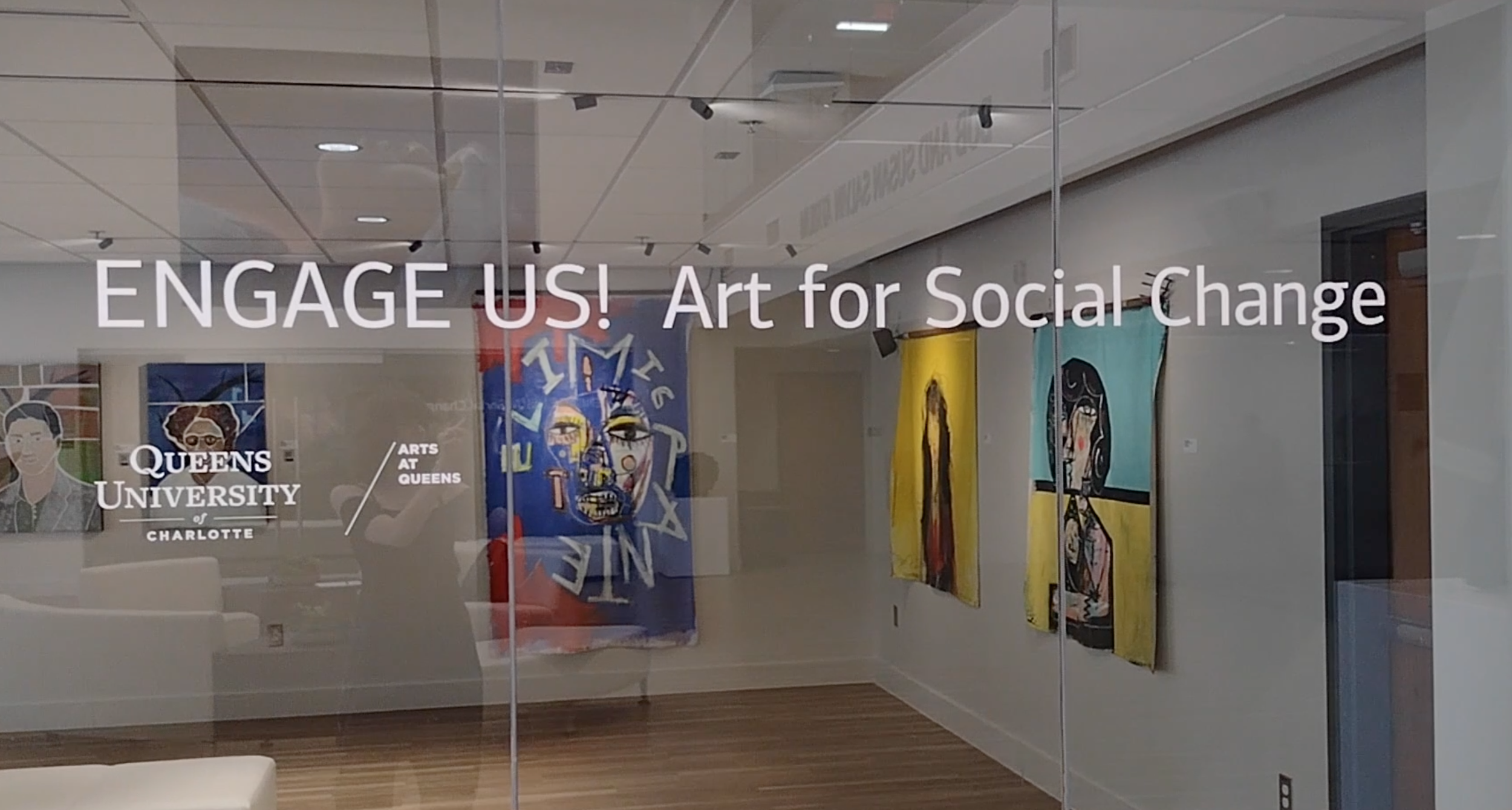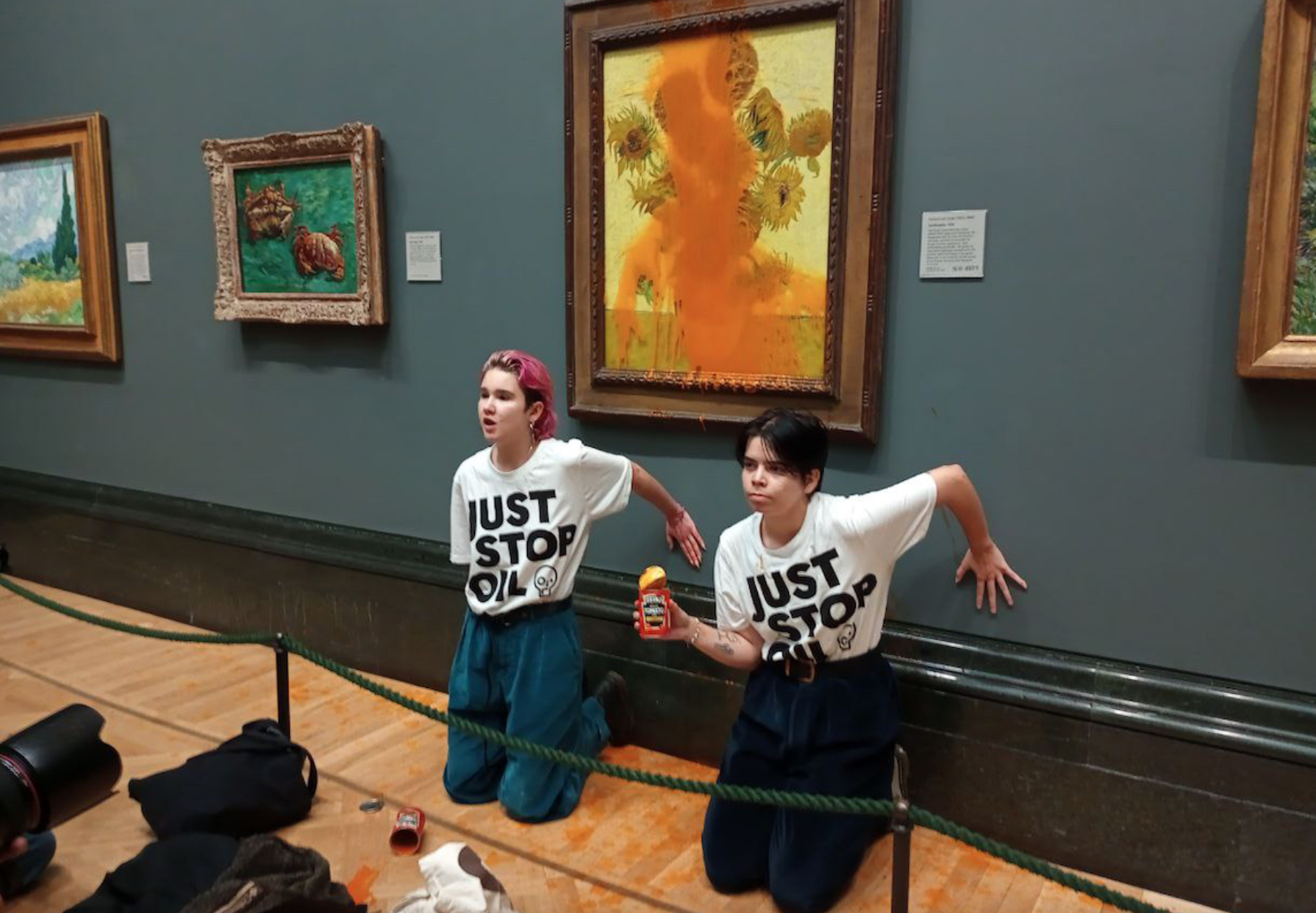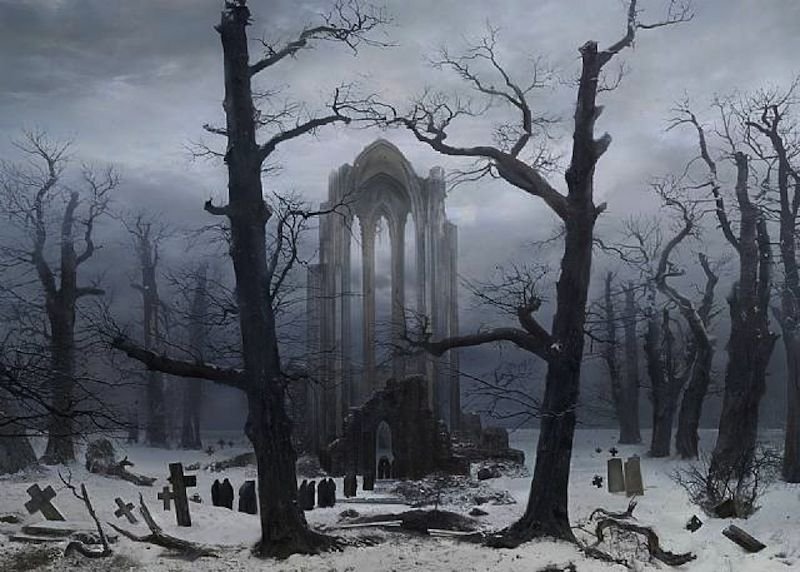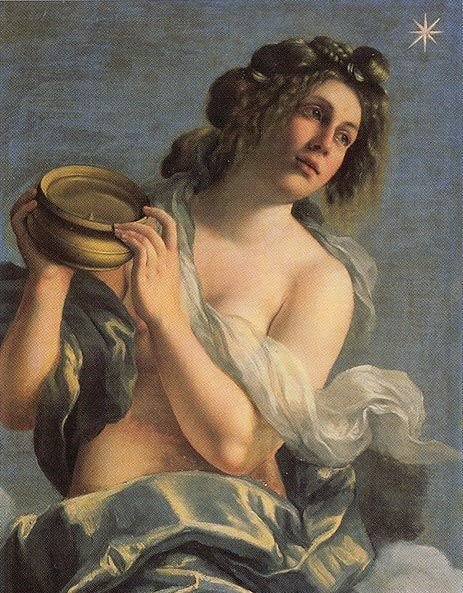
Arts & Culture of Florence: Pre-Departure Sketchbook Experiments!
Student of the Arts & Culture of Florence Summer 2023 JBIP trip explored Florence, Italy throughout the Spring 2023 semester through the maintenance of a sketchbook. Scans and student-written reflections from this process are included in this pre-departure article!
Image: Scan from the Sketchbook of Graphic Design Student Ethan Davies.

Queens Students Investigate “Picasso Landscapes: Out of Bounds.”
Explore the creative exercises which shaped Queens University of Charlotte’s experimental museum partnership course, “Picasso Museum Practicum,” by peering into the sketchbooks of each student engaged with the course during the Spring 2023 semester.
Image: Student Alie Feid’s sketchbook interpretation of “La Rue-des-Bois,” Pablo Picasso, 1908.

Introducing the “Vasari Corridor.”
The Vasari Corridor is an essential element of the streets of Florence, Italy; a “monumental urban ‘footpath’ that took the absolute power of the ruler right into the historic heart of the city,” according to “Museums of Florence.” Alie Feid introduces us to the corridor’s history and architectural construction in the weeks preceding our Summer 2023 John Belk International Program (JBIP) to Florence, Italy!
Image: “The Corridor along the riverside,” Courtesy of http://www.museumsinflorence.com/musei/corridoio_vasariano.html.

ENGAGE US! Art for Social Change - Digital Tour and Retrospective
Gallery Assistant Astrid Bridgwood filmed a digital tour of Queens University’s Spring 2023 exhibit “ENGAGE US! Art for Social Change,” exploring an exciting selection of work from Latin-American artists and activists featured on the campus this past semester.

Queens Gallery Assistants: A Reflection & Exploration.
Meet the team behind Queens University of Charlotte’s recent gallery exhibition in the Sarah Belk Gambrell Center for the Arts & Civic Engagement, the Spring 2023 show “ENGAGE US! Art for Social Change.” Our Gallery Assistants reflect on their experience as curators and as a supplementary hands-on installation team.
Image taken by Dr. Siu Challons-Lipton, featuring Gallery Assistants Astrid Bridgwood, Emma Henry, and Madison Webster alongside exhibition artist Irisol Gonzalez-Vega’s “Lavarse Las Manos.”

The Life of Saint Augustine: Gozzoli’s Frescos in San Gimignano, Italy
Alie Feid introduces the Frescoes of Benozzo Gozzoli, located in the the apsidal chapel of Sant'Agostino in San Gimignano. Looking in the future to this Summer’s May 2023 John Belk International Program (JBIP) to Florance, Italy, the history, techniques, and importance of these frescoes are explored in the context of Renaissance-era Tuscany.
Image: Blessing of the Faithful at Hippo (scene 14, north wall), 1464-65, fresco, width 440 cm, Apsidal chapel, Sant'Agostino, San Gimignano.

Exploring “Museo Leonardo Da Vinci,” in Florence, Italy.
Queens International Student Niya Holland takes us on a visual tour of the Museo Leonardo da Vinci (or the “Leonardo da Vinci Museum,”) through images she took during her previous trip to Florence, Italy.
Image: Detail of the Fourth Room of the Museo Leonardo da Vinci, Courtesy of TripAdvisor.

Meet Emily Núñez: The Artist Sparking Conversation on the Queens Campus
Artist Emily Núñez is a Charlotte native whose life-long involvement in the vibrant arts and culture scene of the Queen City speaks to the growth of Charlotte not just as an urban environment, but as a community. This theme is clarified in her mural, the newest addition to the Queens University of Charlotte’s increasingly artistic campus, which serves as an extension of the traveling “Picasso’s Landscapes: Out of Bounds,” exhibit currently on display at the Mint Museum Uptown.

“Picasso Landscapes: Out of Bounds,” A Queens Student Experience.
This photo series showcases the beginning student experience of Queens’ Art History, Studio Art, and Arts Leadership & Administration students engaged in this semester’s collaborative “Museum Practicum,” course with the Mint Museum Uptown’s current exhibit “Picasso Landscapes: Out of Bounds.” (February-May 2023).
Image(s) courtesy of Reese Nguyen, a senior majoring in Mathematics and Studio Art.

Digital Retrospective: A Virtual Tour of Fall 2022’s “Indigenous Voices of the Carolinas,” Exhibition.
A walk-through video tour guides viewers through the Fall 2022 Gallery Exhibition of the “Indigenous Voices of the Carolinas,” exhibit.
Image taken on the evening of the Gallery Opening, courtesy of Queens University of Charlotte. Featuring Dr. Siu Challons-Lipton and Gallery Assistant Astrid Bridgwood (2024).

Critics of Renaissance Florence
The tradition of art criticism as we have come to understand it in contemporary history began during the Renaissance, where “detailed analysis and deliberate evaluation of artists began,” (Encyclopedia Britannica). These analyses came from men of Florentine origin or interest in particular, ranging from iconic figures of the Renaissance like Leonardo da Vinci, Lorenzo Ghiberti, and Leon Battista Alberti, to the writings of Filippo Villani. This article explores these great art critics who set the precedent for contemporary art historical analysis and art criticism.
Image: “St. John on Patmos,” Nicolas Poussin. 1645–50; Courtesy of the Art Institute of Chicago. 100.3 × 136.4 cm.

Goya’s Black Paintings: Mental Illness & 19th-Century Art
“The last of the Old Masters and the first of the moderns,” Francisco José de Goya y Lucientes was a 19th-century Romantic Spanish painter known for his representation of the everyday contemporary scene, and, later in life, for his work’s dark tonal shifts into madness and mental illness. Mental illness in the 19th century was widely unrecognized as an illness, but rather an insanity or madness. Works like Satan Devouring His Children explore both Goya’s personal suffering, and the view of mental illness in art of the period.
Image: Saturn Devouring His Children, Francisco José de Goya y Lucientes. c. 1820, Oil on Canvas.

The Santa Maria Novella Pharmacy: A Monastic & Medicinal Tradition
The Santa Maria Novella Pharmacy is perhaps the oldest pharmacy in the world, and decidedly the oldest pharmacy in operation in contemporary Italy. In preparation for May 2023’s study abroad program in Florence, Italy, Astrid Bridgwood explores the Pharmacy’s origin and modern-day sales environment, from attempts to cure the Black Death to revolutionary developments in perfume.
Image: “Scent of the Past,” Detail shot of Pharmacy Interior, © 2023, Officina Profumo-Farmaceutica di Santa Maria Novella. Courtesy of CNN Travel.

“ENGAGE US! Art for Social Change.” - Artist’s Panel Discussion
Watch the recorded “Artist’s Talk,” panel discussion for the Spring 2023 Gallery Exhibition, “ENGAGE US! Art for Social Change,” hosted by Dr. Siu Challons-Lipton and student Gallery Assistants, featuring Charlotte-based Latinx artists Nico Amortegui, Edwin Gil, Irisol Gonzalez and Rosalia Torres Weiner.
Image: “Lavarse Las Manos,” Irisol Gonzalez. 2020, acrylic on linen. Image taken in the Queens University of Charlotte Sarah Belk Gambrell Center for the Arts & Civic Engagement, Bank of America & Loevner Galleries.

Art Vandalism: An Exploratory Opinion Piece
Art vandalism is a form of protest which has existed for years. Unfortunately, the recent resurgence of this practice in the public eye— and all over social media— has poor consequences for both the activists and the artworks. Nicole Gomez explores 2022’s Just Stop Oil protests in this opinion article.
Image: “A Recent Just Stop Oil Protest…” (2022) via Just Stop Oil/Anadolu Agency via Getty Images, Courtesy of ARTNews.Com.

Romantic Lutheranism: Friedrich’s Landscapes in Analysis
The early 16th Century was defined by a movement away from the religious and political dominance of the Roman Catholic Church in Western and Central Europe known as the Protestant Reformation. Caspar David Friedrich, a 19th century German Romantic artist working prominently in landscape paintings, presented religious references and themes from his Lutheran background in much of his work. Ideologically, both Lutheranism and Romanticism are presented in similar manners with their strong connections to nature and the infinite. In an analysis of five of Friedrich’s oil paintings, the symbolism and composition of his paintings will be compared.
Image: Monastery Graveyard in the Snow, Caspar David Friedrich. 1819, Oil on Canvas.

“Florentine Poems.” Four Poems Inspired by a Student’s Trip to Florence.
Recently-graduated Queens student Brooke Wright visited Florence, Italy through a faculty-led program in Summer 2022, courtesy of Queens University of Charlotte’s John Belk International Program (JBIP). This program focused on Florentine literature, but she found herself captivated by the art she learned about and was exposed to during her trip. These poems resulted from such interdisciplinary inspiration.
Image: “Birth of Venus,” Sandro Botticelli. Tempera on canvas, 1485.

The Medici Family and The Renaissance: A Research Paper Excerpt
The Medici were known for commissioning great artists to create works we still hold dear today, like Botticelli’s Primavera, as well as convincing their colleagues to commission work as well. Through their personal commissions and direct support of artists, as well as their friend’s commissions, the Medici family of Florence were vital in bringing on the Renaissance, and their influence is still seen today.
Image: Sandro Botticelli, “Madonna of the Magnificat,” 1481. Tempura. Image thought to depict the family of Piero de' Medici.

Artemisia Gentileschi’s “Allegory of Inclination,” and Autonomy: Exploring her Florentine Period
[Artemisia Gentileschi] sought to embody herself in her work, and we can understand her depiction of “inclination,” in an artist as a depiction of herself— a kind of reclamation of her skill, similar to the act of reclamation seen in her biography, wherein she asserts that the origin of her artistic predilection is feminine and therefore separate from her father.
Image: Artemisia Gentileschi, “Allegory of Inclination.” 1615-16. Oil on canvas.